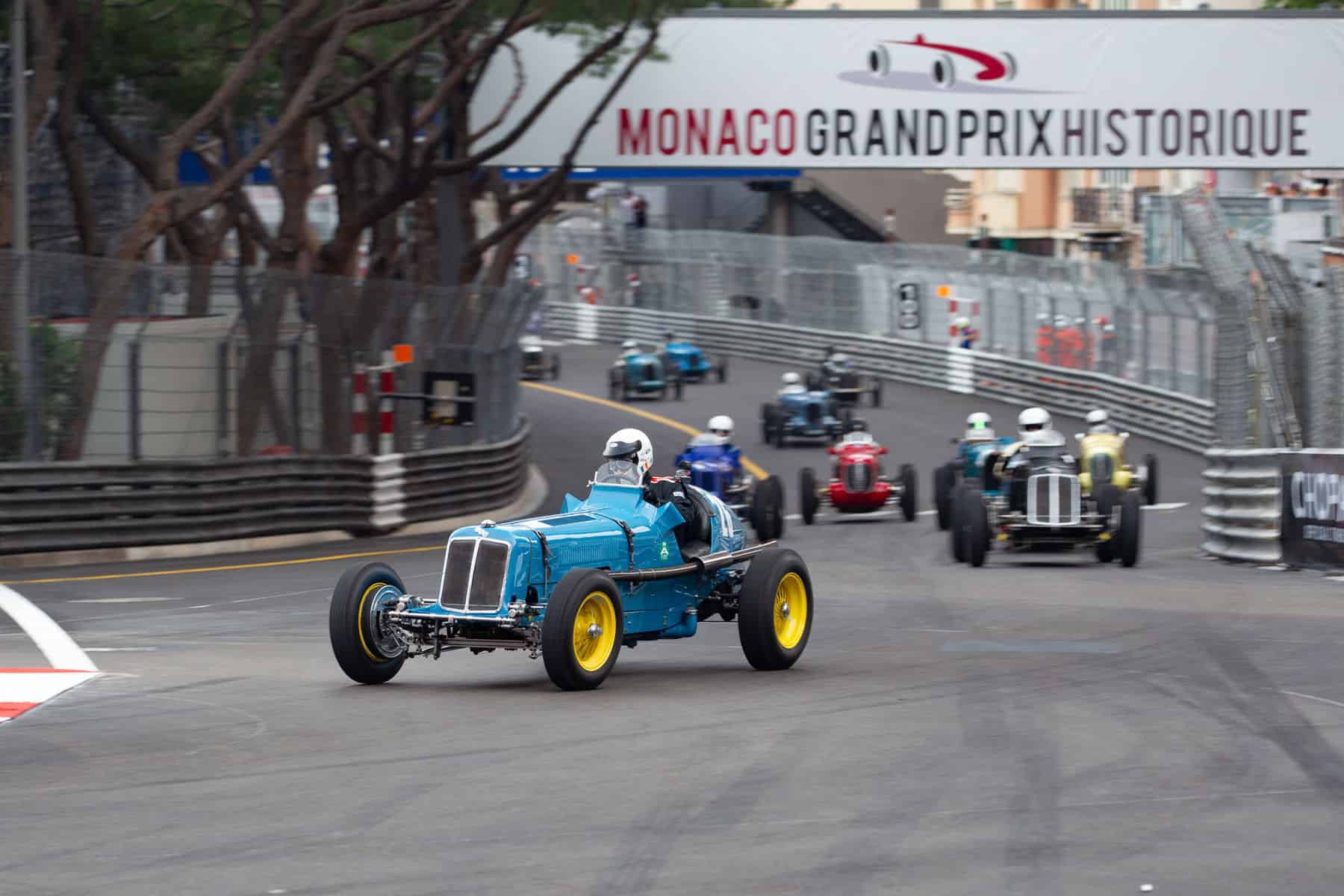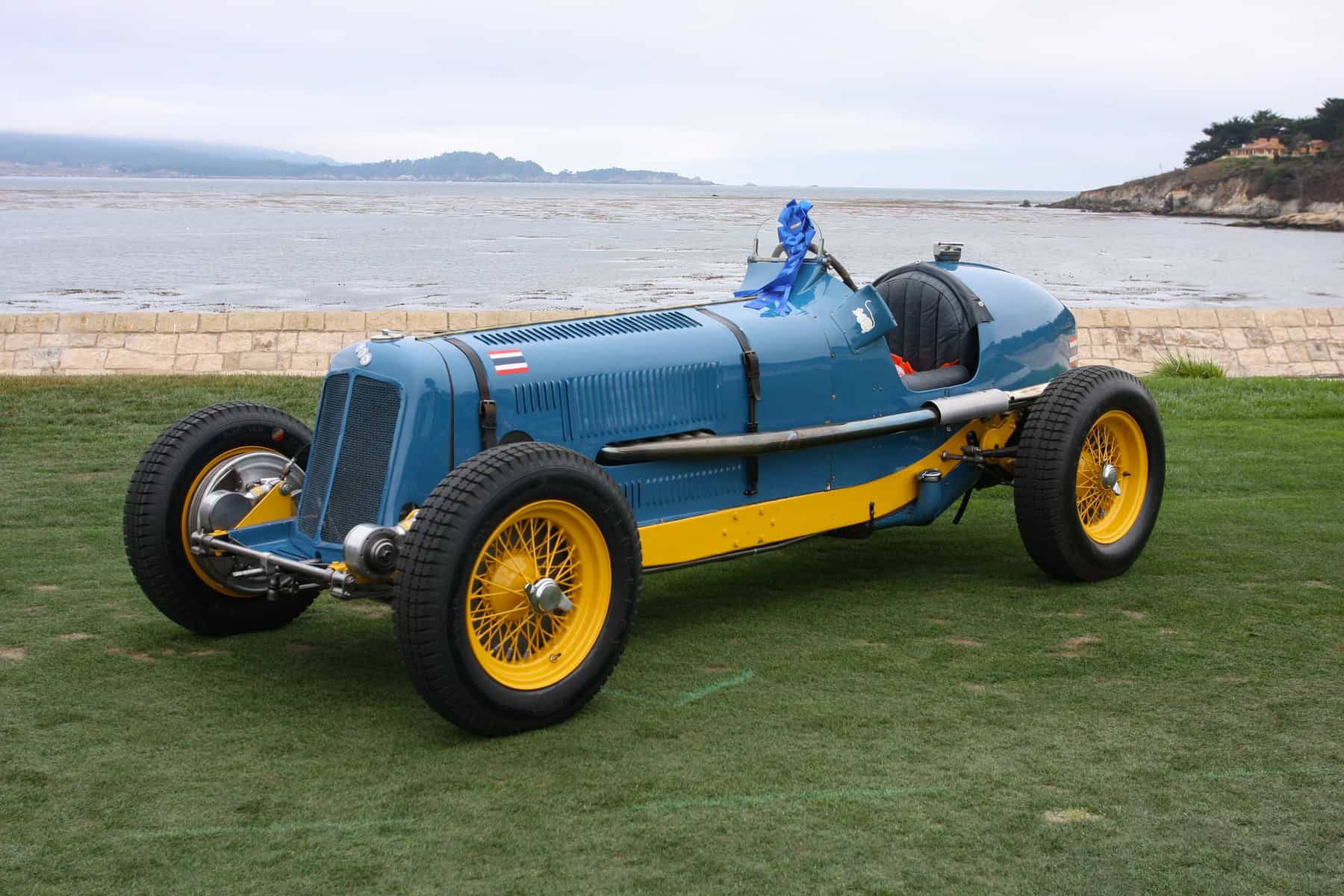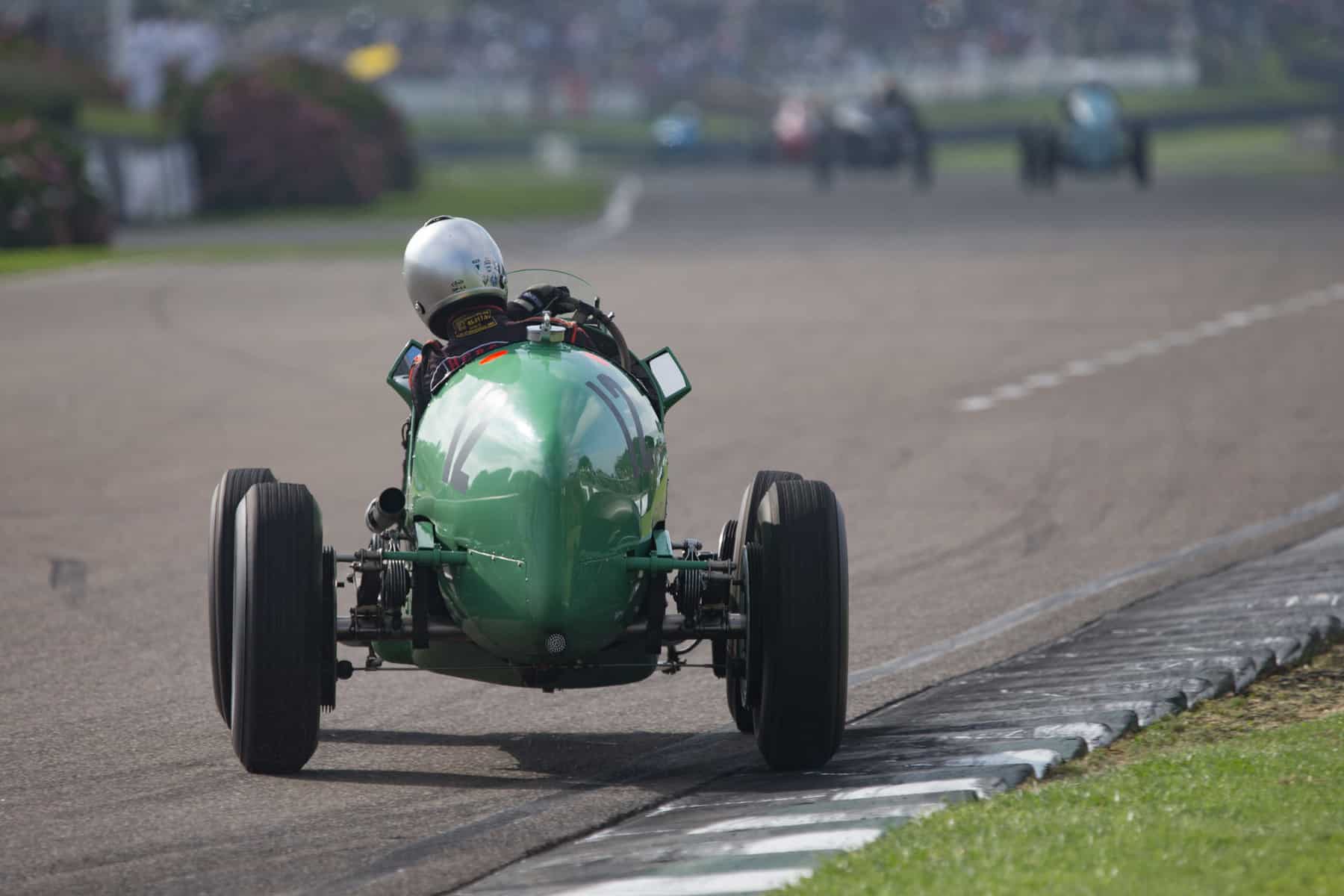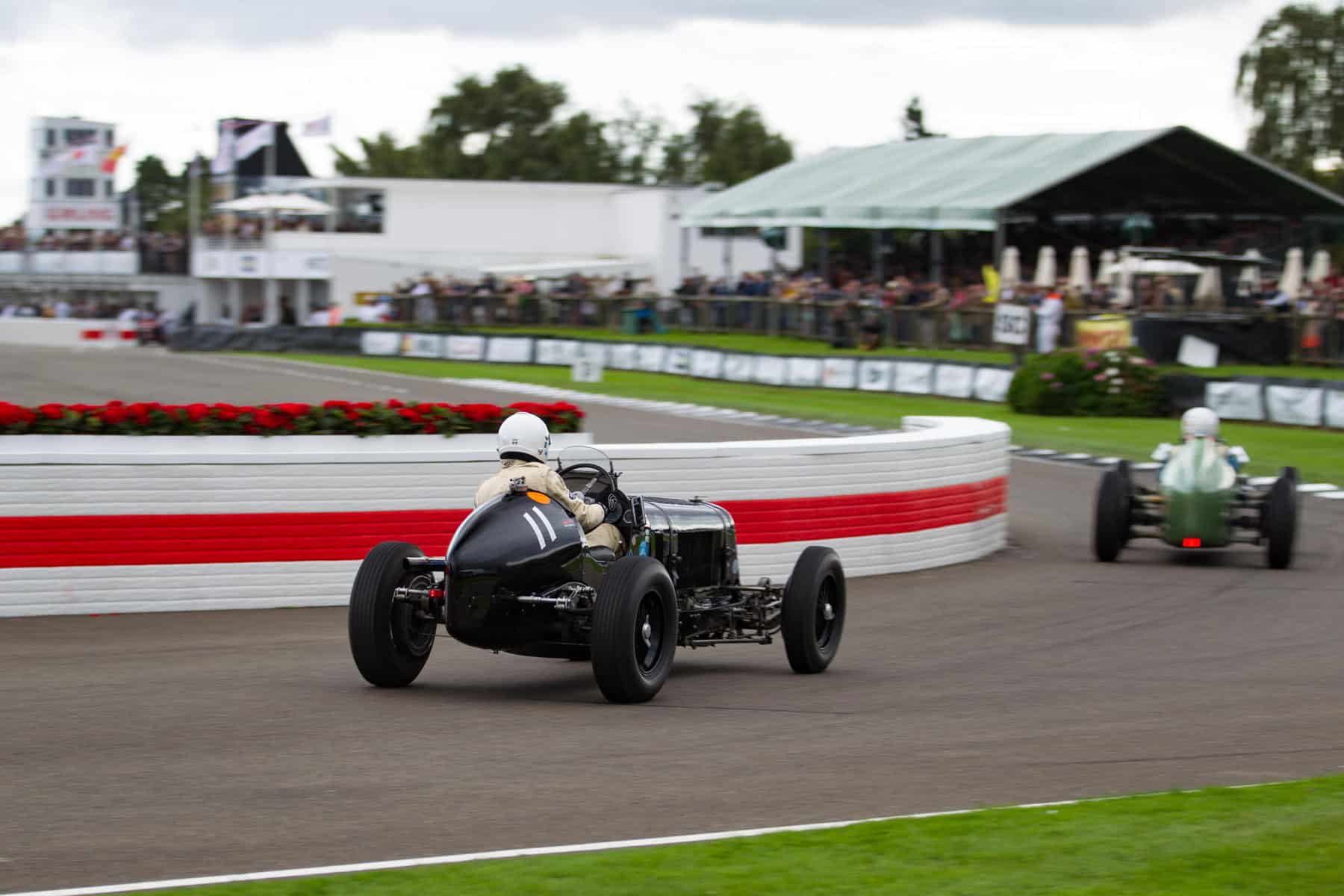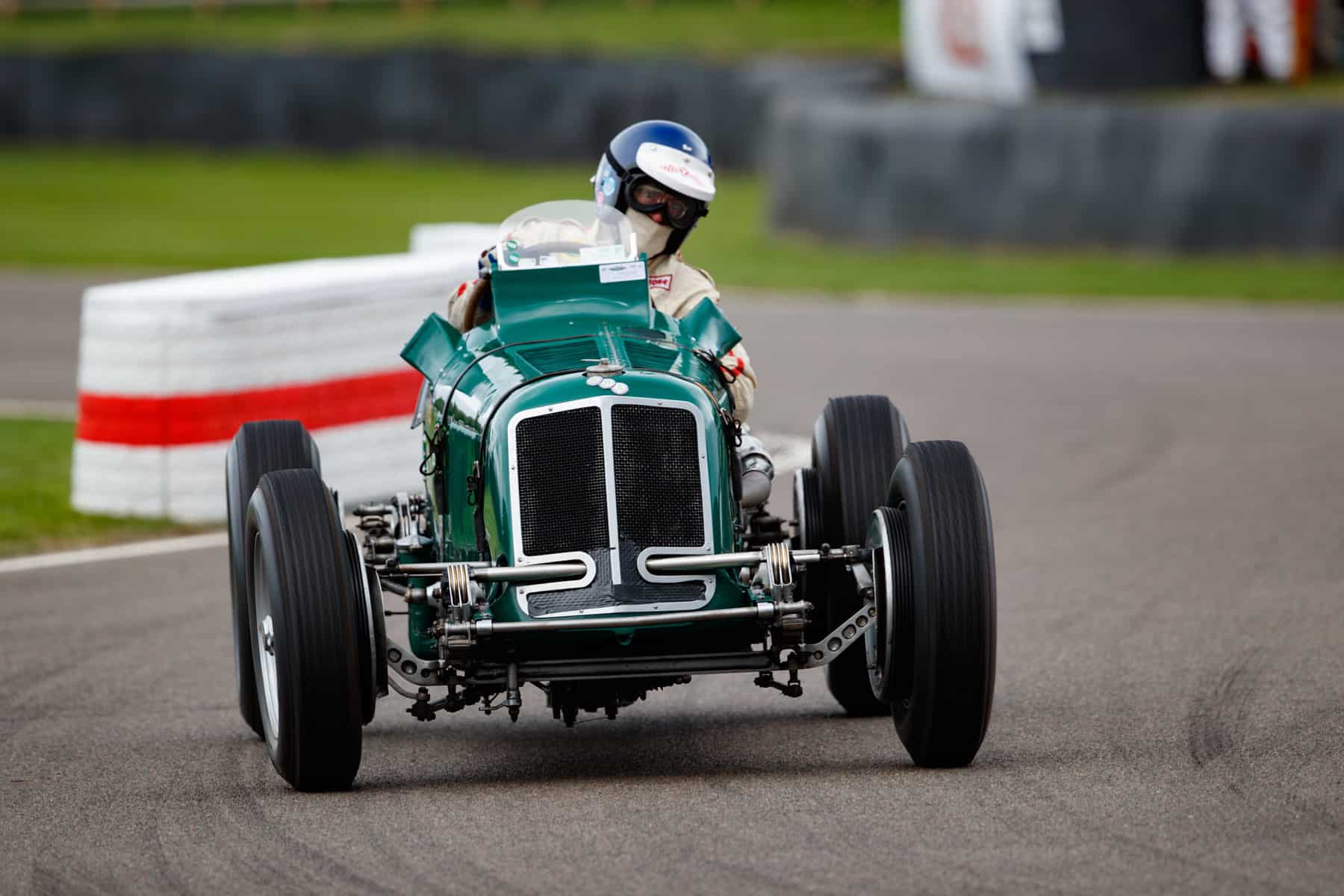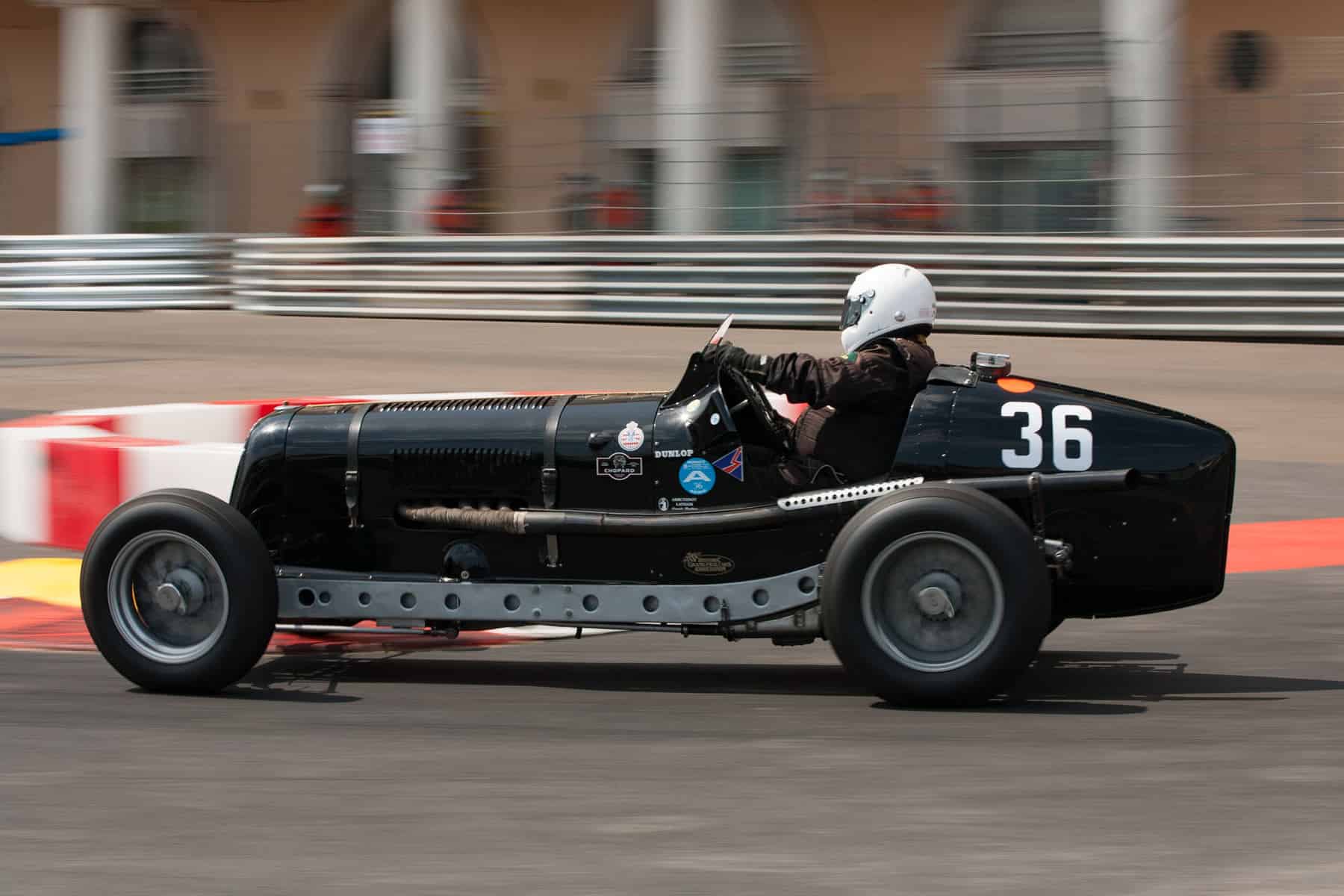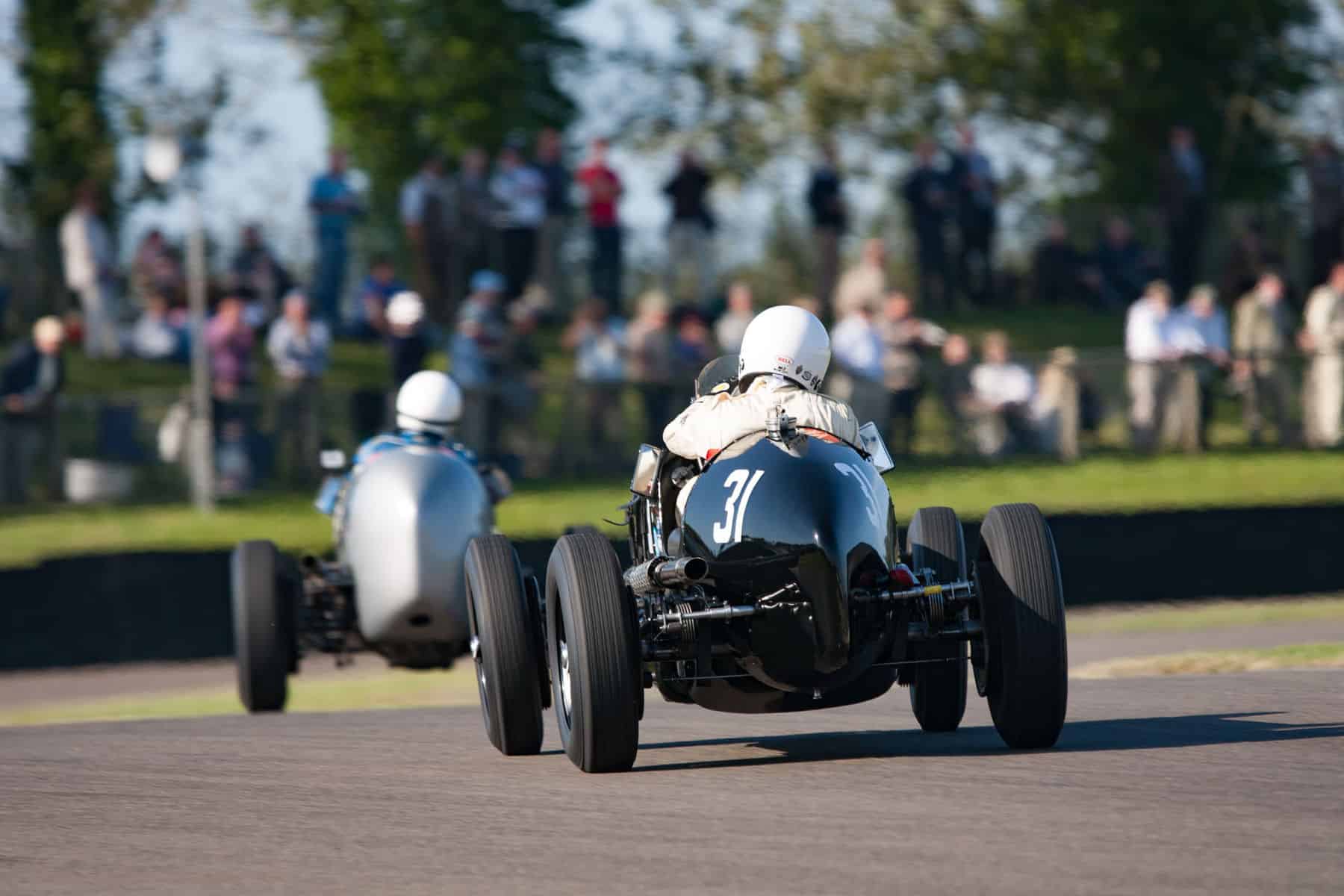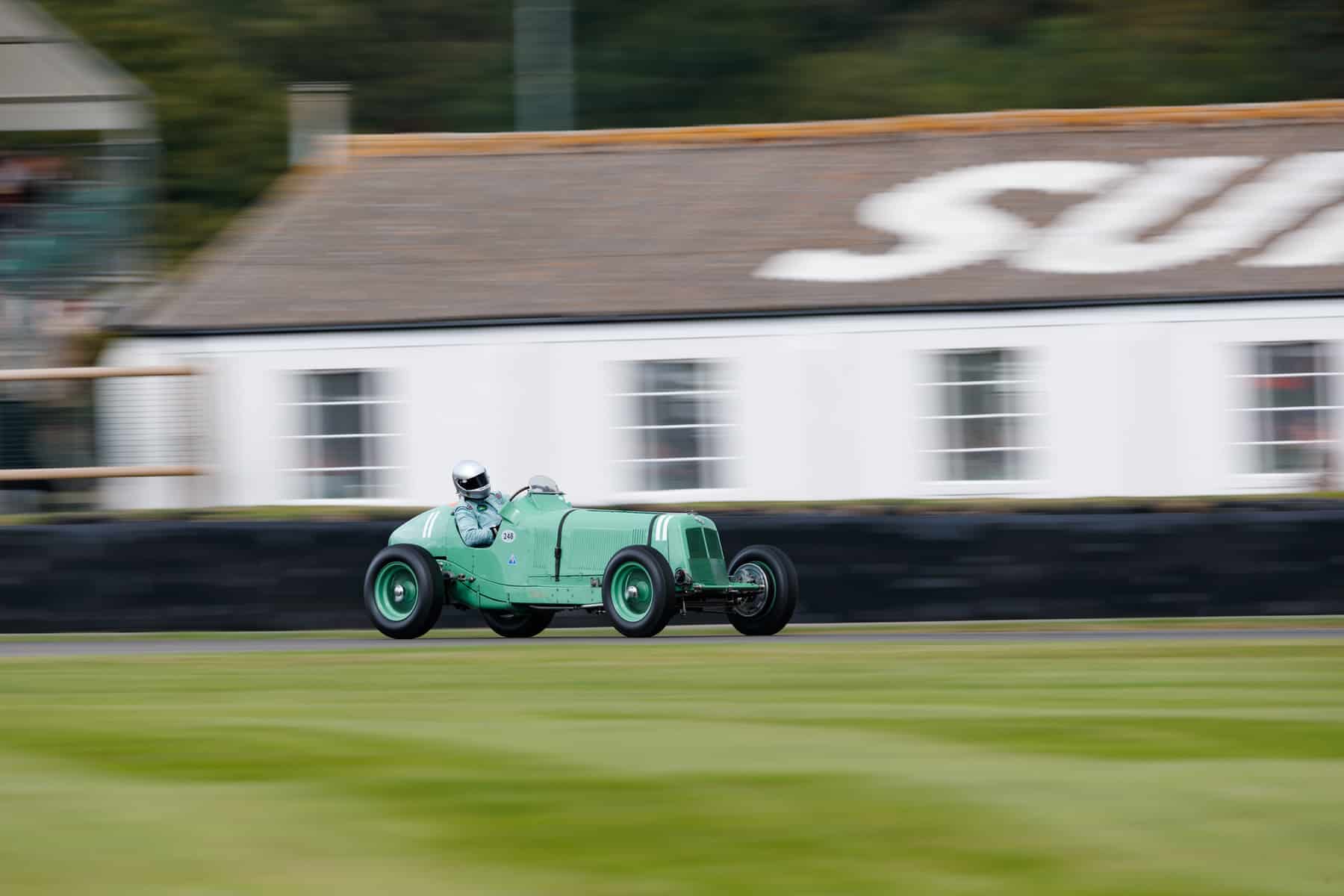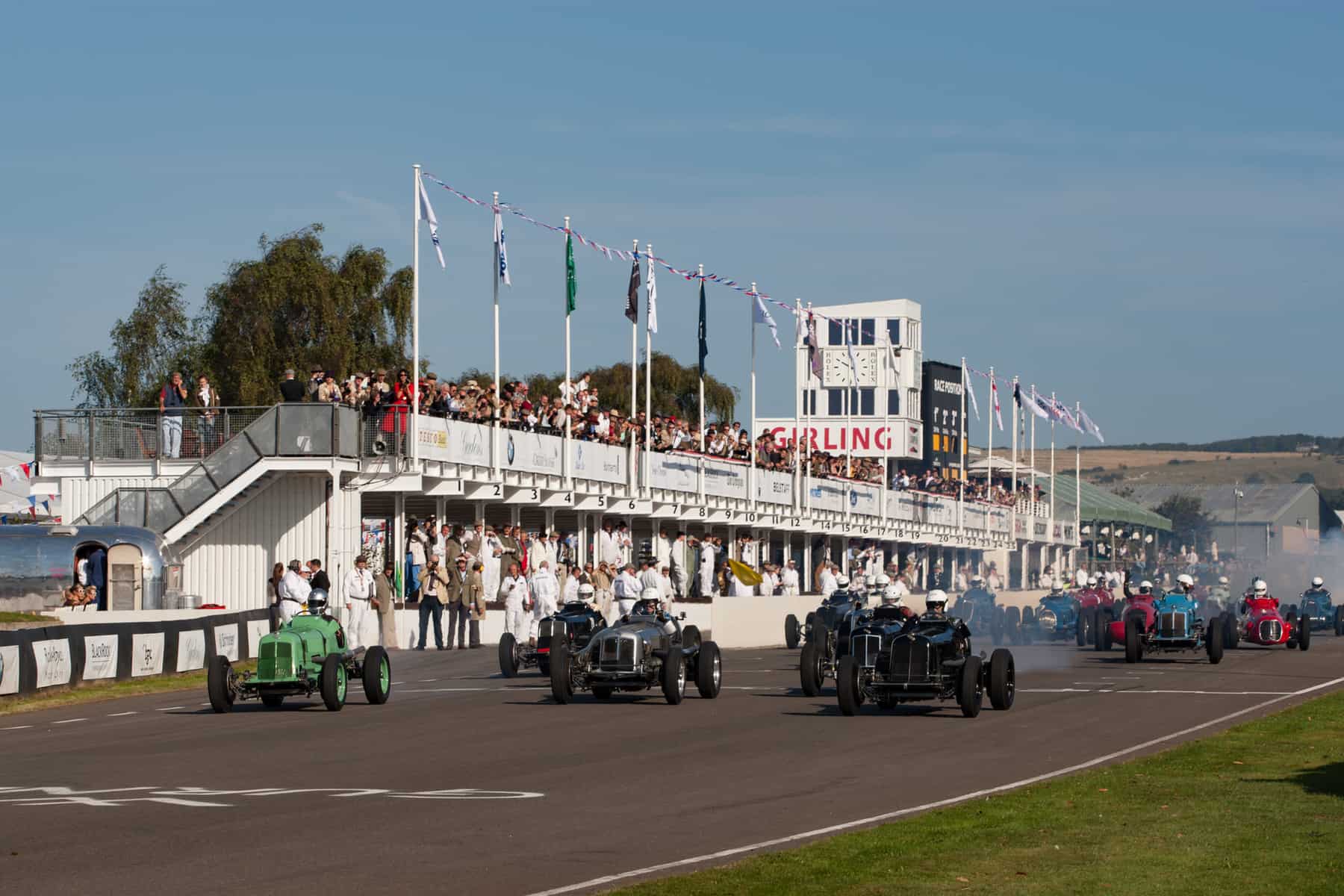English Racing Automobiles Live On
The story of the iconic E.R.A.
BY: WOUTER MELISSEN
“I just had to have one!” was American historic racer Chris MacAllister’s clear answer on why he had added an E.R.A. to his formidable stable that already included a Gulf Porsche 917, Ford GT40, and McLaren M8F Can-Am car.
He continues: “I had admired E.R.A.s for years at Monaco, Goodwood, and Monterey. They were appealing because of the way they looked, wide stance, a low, classic body shape, distinctive radiator, and small diameter wide wire wheels. I watched with interest as they were warmed up, on jacks, rear wheels spinning, ‘rap rap rap’ goes the exhaust. The methanol was an exotic element. I noticed that they were very successful wherever they raced, usually winning their class.”
The E.R.A. or English Racing Automobiles was the brainchild of Raymond Mays, who was an accomplished racing driver himself. It came at a time when the Grand Prix success of Sunbeam and the Bentley Le Mans wins started to become a distant memory. International racing success was left to the French, Italians, and Germans. There was plenty of motorsport activity on the British Isles but that mainly focused on the Brooklands speed bowl, sprints, and hill climbs. It would take a privately funded effort, aptly named English Racing Automobiles (E.R.A.), to bring the country back into international single seater racing. Although fewer than two dozen E.R.A.s were eventually built, they have all achieved a legendary status, and most have been raced continually since they were new.
During the 1933 season, Mays campaigned a Riley-based special in hill climbs and sprints. Known as the “White Riley,” it was hugely successful and attracted the attention of another racing driver and a keen patriot: Humphrey Cook. Crucially, Cook was also particularly well off and he offered Mays the backing to create a new racing car from scratch to represent Britain in the voiturette single seater racing category, intended as a junior counterpart to the full-bore Grand Prix machinery. With Grand Prix racing dominated by big manufacturers, the voiturette category was particularly interesting for smaller, specialist racing car constructors like Maserati.
Having no affiliation with a major manufacturer, Mays was free to assemble a team of the brightest minds in British motorsport. The first member was his good friend Peter Berthon, who had already been responsible for tuning the straight-six Riley engine that Mays raced in 1933. With its 1.5-liter displacement, the modified production engine fitted to the “White Riley” was a perfect fit for the voiturette regulations. Accordingly this would form the basis for the first E.R.A. competition car. Also on board was Murray Jamieson, who was particularly renowned for his work with superchargers and had already worked with Mays and Berthon in 1933. New to the team was chassis guru Reid Railton, who was a Brooklands legend and had just produced the mighty Napier-Railton Special that is the perpetual lap record holder on the Surrey Speed Bowl.
The contrast between the mighty 24-liter W12 aero-engined Brooklands special and the new voiturette could not be bigger but that proved no issue for Railton. For the first E.R.A., he laid down a wholly conventional steel ladder frame. Front suspension was through a beam axle, which swept up on either side to allow for a slightly lower ride height. At the rear a conventional live axle was fitted. On all four corners, the E.R.A. was equipped with semi-elliptic leaf springs and Hartford friction dampers. Stopping power was provided by large, rod-actuated drum brakes. To improve the cooling, the drums themselves were placed well outside the wheels, fully in the airflow. The first chassis was built at Railton’s Brooklands based company Thomson & Taylor.
That Mays and Berthon opted to use their evolution of a production engine for the voiturette racer was by all means not a compromise but a testament of the quality of the Riley engine. While the straight-six used in the E.R.A. was based on the unit found in the Riley 12/6, its origins can be traced back to the “four” in the Riley Nine of 1926. Designed by Percy Riley, this sophisticated engine featured a cross-flow head with hemispherical combustion chambers with the valves placed at a 45-degree angle. The intake and exhaust valves were operated by two separate camshafts, which were mounted laterally instead of in the head. This ensured that the engine had the benefit of a twin-cam configuration without the complication of additional gears to drive the camshafts. The valves were actuated by the camshafts through push-rods.
By adding two cylinders, the original Nine engine was transformed into the straight six that Mays had so effectively raced during the 1933 season. Berton, with the help of Murray Jamieson, managed to extract maximum performance from the Riley-based engine by attaching a massive Roots-type supercharger. This was mounted vertically, in front of the engine. Whereas the “White Riley” used a SU carburetor, the air and fuel was now mixed by single Zoller carburetor, which was then fed through the supercharger to be literally forced into the six intake ports. The E.R.A. engine was available both in 1.5-liter and 1.1-liter guise. The larger of the two versions produced close to 170 hp. The Riley-based engine was mated to a Wilson pre-selector gearbox. Popular in luxury cars of the period, this semi-automatic gearbox allowed the driver to pick a gear and then shift by pressing the “gear change pedal,” which was also in the spot where the clutch pedal would have been.
Early in 1934, E.R.A. chassis R1 was built up near Mays’ house in Bourne, Lincolnshire. It was clothed in an aluminum body that was credited to a Mr. Piercy. He reportedly also styled Sir Malcolm Campbell’s Blue Bird land-speed record breaker, which had also been built with the help of Reid Railton. The narrow, single-seater bodywork featured a fully cowled radiator. This cowling originally boasted a “Rising Sun” badge but this was soon replaced by the now familiar E.R.A. badge that featured the manufacturer’s three initials in three circles. This was designed by Squadron Leader Hugh Lewis Pingo Lester, who was a friend of Mays’. The letters in the badge were the same light-green color as the E.R.A. prototype was painted. This was a distinctly different color than the dark green used before by the likes of Sunbeam and Bentley, which is now known as British Racing Green.
Now known as the E.R.A. A-Type with chassis number R1, the first example was ready in May of 1934. The complete package was a wholly conventional design and with its solid axles, cable-operated drums, and the driver seated relatively high; the new E.R.A. certainly did not look like it was ready to take over the world. And it wasn’t, as Mays struggled during his first outings in R1 with handling issues. This was tracked down to the steering linkage, which was not installed correctly. Once this was rectified, Mays starting winning races and hill climbs on the British Isles. It became clear that the E.R.A. was much more than just the sum of wholly conventional parts. The next A-Type, R2A, was built for Humphrey Cook and was also finished in the light-green works color.
Two more were built, numbered R3A and R4A before the B-Type evolution was introduced with a boxed chassis. A further thirteen cars were constructed, numbered R1B through to R14B (the serial R13 was not used for superstitious reasons). These were made available to customers, which included the young and very talented Richard Seaman. His mother bought R1B, which was painted black and prepared by Giulio Ramponi. The Seamans had called in the help of the Italian-born mechanic as they were not very impressed with the build quality of the E.R.A. when it was first delivered. In the hands of Seaman, R1B absolutely dominated international voiturette racin
The next E.R.A. was acquired as gift by Prince Chula of Siam (today’s Thailand) for the twenty-first birthday of his nephew Prince Birabongse Bhanubandh, who was better known as Prince Bira. It was run by the White Mouse team and painted in bright blue with yellow chassis rails and wheels. The young prince raced the car with great success, scoring no fewer than sixteen wins. The car was nicknamed “Romulus” when Bira also added R5B “Remus” to the stable, a reference to one of the mythical twins who were mothered by a wolf, one of whom – Romulus – would found the city of Rome. In 1937, a third E.R.A. was bought, R12C or Hanuman, after a Hindu god. Of the three cars, R2B Romulus was the most successful and it was retained and cherished for many more years by the daughter of Prince Chula. Arguably the most original of all surviving E.R.A.s, it finally changed hands in the second half of the 2000s when it joined a prominent American collection.
Initially, Mays primarily raced R1A and R3A but then switched to R4B, which was initially painted light green but was re-finished in black in 1936 to match the other works cars. Not only did R4B serve as Mays’ personal racing car, it was also the development machine. It was renamed R4C when it was upgraded to C-Type specification. This included hydraulic brakes and Porsche-type independent trailing-arm front suspension. A 2.0-liter engine had already been created, first fitted to R3A. From the C-Type, a Zoller supercharger was fitted, which helped raise the output of the 2.0-liter unit to hefty 240 hp. In 1938, it was further modified with a drilled and thus lightened chassis and renamed for a second time to R4D. With twenty-six victories, it was the most successful of all E.R.A.s.
By the end of the 1930s, the latest Alfa Romeo 158 and Maserati 4CL voiturette machines had raised the bar considerably. Historic racer Mark Gillies, who has raced both with great success, explains the difference: “The Maserati 4CL is more of a fingertip car and you have to grab an E.R.A. by the scruff of the neck – which is very like driving a Lotus versus driving a Cooper or a Brabham. At a quick circuit like Goodwood, there isn’t much to choose between them because the Masers handle so nicely in quick corners, but on a more stop-and-go circuit, an E.R.A. is generally quicker.” Gillies continues: “Before they re-paved Goodwood, though, I could see why the Maseratis rendered E.R.A.s obsolete: you hit the bump at Fordwater in the Maserati 4CL and it just sailed through. In R3A, it took three corners for my vision to recover!”
Berthon did design an all-new, much lower E-Type for the 1939 season that was clearly inspired by its Italian rivals. War caused the season to be curtailed and the E-Type was never properly developed. After the war, the existing E.R.A.s carried on racing and some even competed in the first rounds of the Formula 1 World Championship, which had adopted the pre-war voiturette regulations. Even when they were really past their prime in contemporary events, they did not stop racing; the E.R.A.s simply continued competing in the burgeoning historic racing scene. Here they really became the stuff of legend with the cars simply being referred to by their chassis number.
Many E.R.A.s were owned for years by the same small group of enthusiasts, as MacAllister had noticed: “The group of guys driving them seemed to pal around and have a great time. It seemed like a fun club. I spoke with several owners and they all bragged about the cars.” This further sparked his interest: “I began to read about them and what a great history! From the Riley roots and Raymond Mays’ skill and ambition to Reid Railton to Humphrey Cook and the forming of E.R.A., immediate success, B. Bira, Dick Seaman, the history was exceptional.” He eventually found a superb example, R14B, which had been owned by English enthusiast Donald Day for the better part of six decades. “Now that I have one, I like it a lot.”
“You can throw the car around, it slides beautifully with a very low center of gravity. Good acceleration, good brakes, the pre-selector gearbox took a while to get used to but is quite handy once you are. Standing starts are still tricky.” MacAllister continues: “I enjoy leaning out of the cockpit during hard cornering, kind of like riding a motorcycle. It is interesting to see the wheels bouncing around and they are right there! The cornering ability is great. Racing with other cars is exciting because you don’t want to touch wheels but you can dice and pass easily. You can see the other driver because we are somewhat exposed and visible.” He concludes: “I just wish there were more events in the U.S. in which to run it.”
Having won many races with several E.R.A.s on both sides of the Atlantic, Gillies is also full of praise: “First thing, it’s a lot of fun to drive! I’ve driven a lot of great old racing cars, and an E.R.A. is one of the best balanced.” They do take a special touch to drive: “A car with original dampers needs relatively gentle braking to ensure you don’t unload the rear wheels, but the basic technique is get on the power as soon as you turn in to dial out understeer, and then you can balance it with steering and throttle in a proper four-wheel drift.”
Gillies attributes much of the success to the combination of the powerful engine and the pre-selector gearbox: “The power is good and the low-down torque even better, especially with a 2.0-liter car, and the preselector gearbox is also great, allowing you to downshift in all sorts of circumstances that you couldn’t do with a manual ’box. In the wet, the combination of utterly predictable handling, relative heaviness, and low-down grunt means you can beat cars that are a lot more modern.” He continues: “I think they have attracted some of the more talented historic car drivers down the years, too, which also helps.” Gillies concludes: “To get the best out of one, though, you need a fair level of commitment …”
Hugely successful in period, the E.R.A.s have become icons during their historic racing careers. Of the seventeen A-, B-, C-, and D-Types built, all but one have survived – and the one that was destroyed is also the only one that did not win a race in period.
